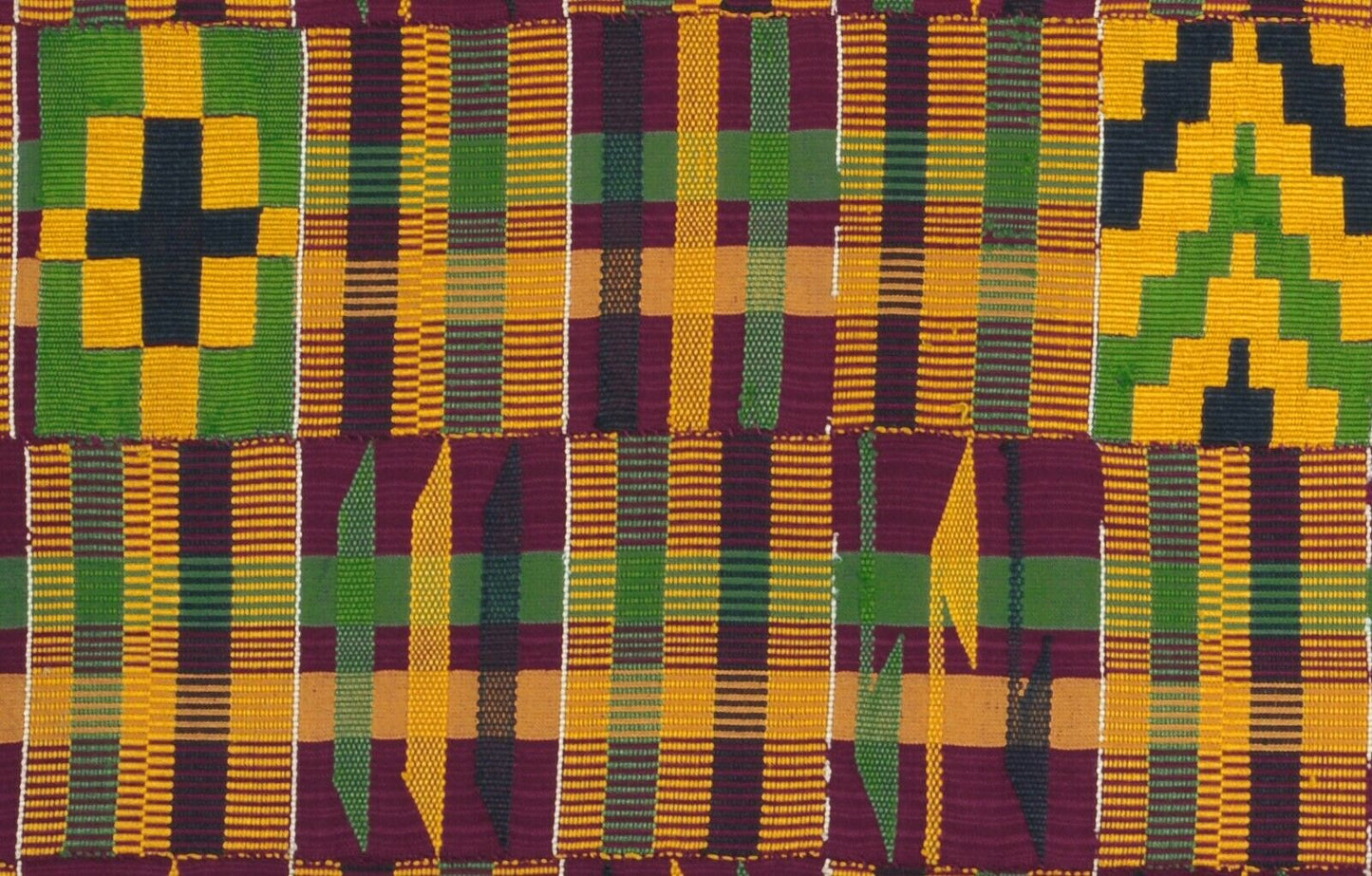Tribalgh
Handwoven Ashanti Kente Woman Cloth – Vintage Ghanaic Art (75″ × 46″)
Handwoven Ashanti Kente Woman Cloth – Vintage Ghanaic Art (75″ × 46″)
Item number:
SKU:SD-31158
Check shipping cost
Check shipping cost
Standard shipping cost for this item is $ 14.95
Insured "AIR MAIL" anywhere in the world.
Delivery time for Europe is 7-14 working days.
Delivery time for USA and the rest of the World is 14-21 working days.
We combine shipping on multiple purchases!
DHL option available for faster delivery ( 2 - 4 working days ) to all over the world.
During your checkout you will be able to see cost and select DHL option.
FREE upgrade to DHL for orders over $ 200
Couldn't load pickup availability
Handwoven Ashanti Kente – Authentic 1960s–70s Woman Size Cloth (75" × 46")
- Size: 75″ × 46″ (190 cm × 117 cm) – perfect as a wrap, wall hanging, sofa or bed accent
- Origin: Handwoven in Kumasi, Ghana (Ashanti/Asante Kingdom)
- Era: Vintage 1960s–70s, in excellent condition with minor wear and age patina
- Material: Premium cotton (possibly with rayon), authentic traditional weave
- Quality: Ceremonial-grade, artisanal craftsmanship from horizontal treadle loom
This exquisite Handwoven Ashanti Kente is a true treasure from the heart of Ghana. Crafted by skilled weavers in Kumasi during the 1960s–70s, this piece showcases vibrant hues, intricate patterns, and the deep cultural significance of Ashanti tradition. Whether worn as ceremonial attire or displayed as art, it embodies elegance, history, and grace.
About Ashanti Kente Cloth
Ashanti Kente (also called Ghana Ashanti Kente or Handwoven Ashanti Kente) originates from the Ashanti people of Ghana, West Africa. Woven on horizontal treadle looms, narrow strips are meticulously crafted often over weeks or months then sewn together to form a full cloth. This ceremonial textile represents a visual tapestry of history, ethics, philosophy, oral literature, moral values, and spiritual beliefs.
Design & Meaning: Each pattern (Adinkra symbols and geometric motifs) carries unique significance stories, proverbs, or social values. Colors are deeply symbolic: black for maturation and spiritual strength, gold/yellow for royalty and wealth, green for growth, blue for peace, and red for political/patriotic sentiments.
Materials: While cotton and rayon were standard in mid-century cloths, silk versions were rarer and reserved for royalty. This cotton piece offers both authenticity and practicality.
Cultural Usage: Worn by Ashanti royals, chiefs, and dignitaries, Kente was and still is used in rites of passage, festivals, funerals, and important ceremonies. Unlike Ewe Kente (from eastern Ghana/Togo), Ashanti Kente features larger, bolder patterns and brighter color palettes, reflecting the Ashanti aesthetic and symbolic narratives.
History: The origins trace back to the 17th century. According to legend, two hunters learned weaving from a spider (“Ananse”) and introduced the craft to the Asante. Over centuries, Kente evolved into a royal and sacred textile, later becoming an international symbol of African artistry and heritage. Today, vintage pieces like this are prized by collectors, decorators, and anyone who admires traditional African art.
This cloth is a celebration of culture and craftsmanship a real piece of authentic African art perfect for both traditional use and modern décor.
Discover more:
Share








